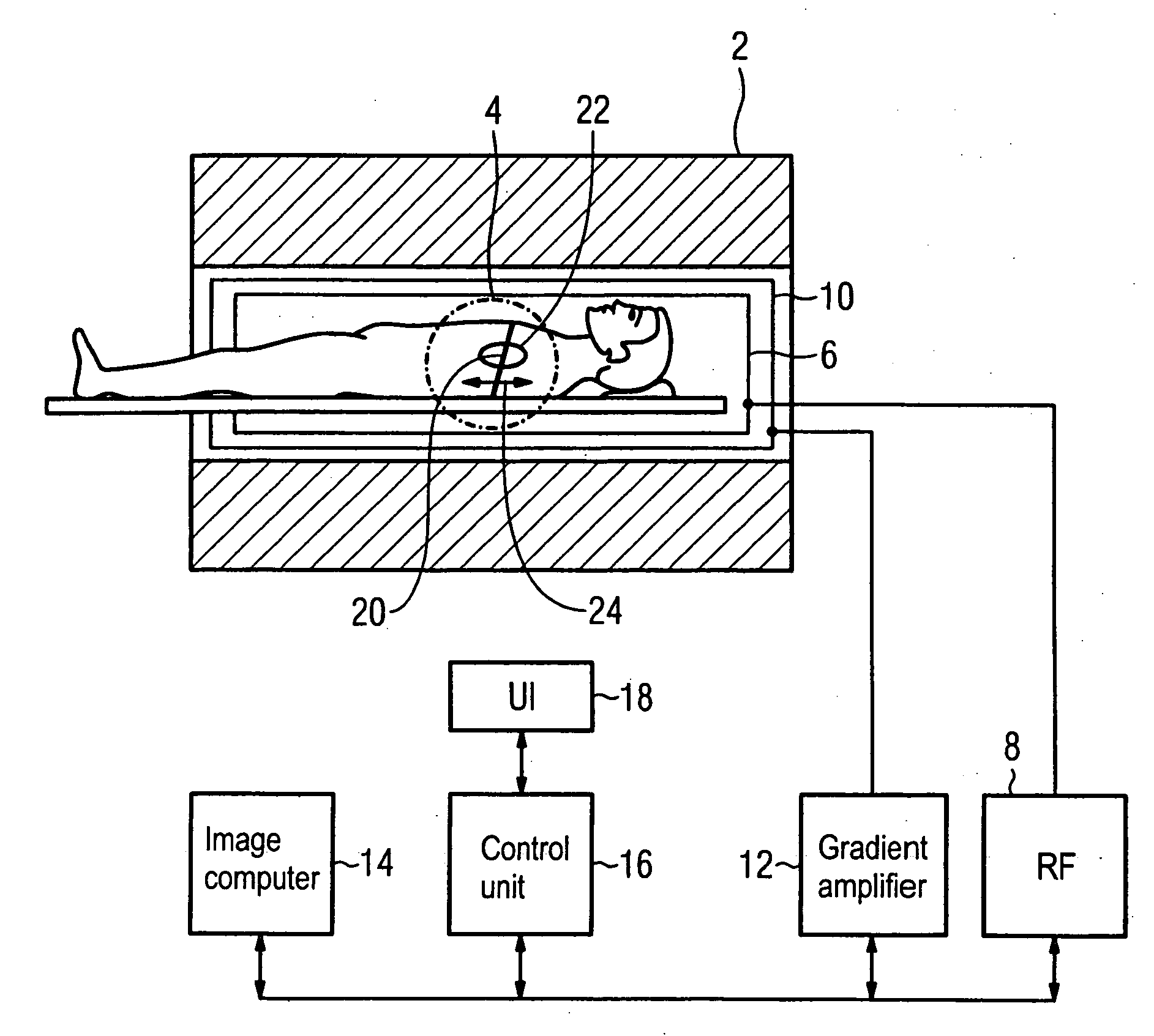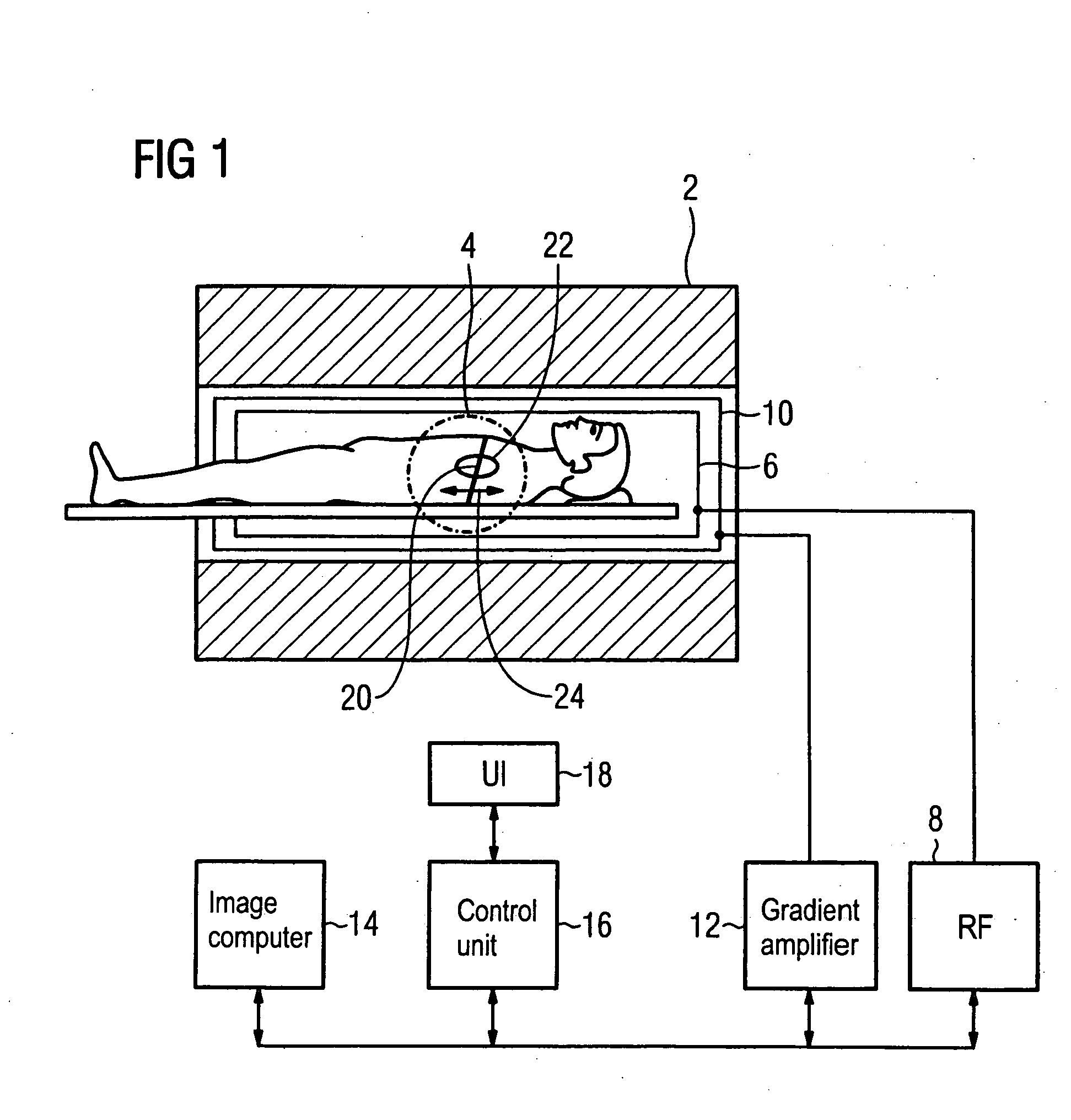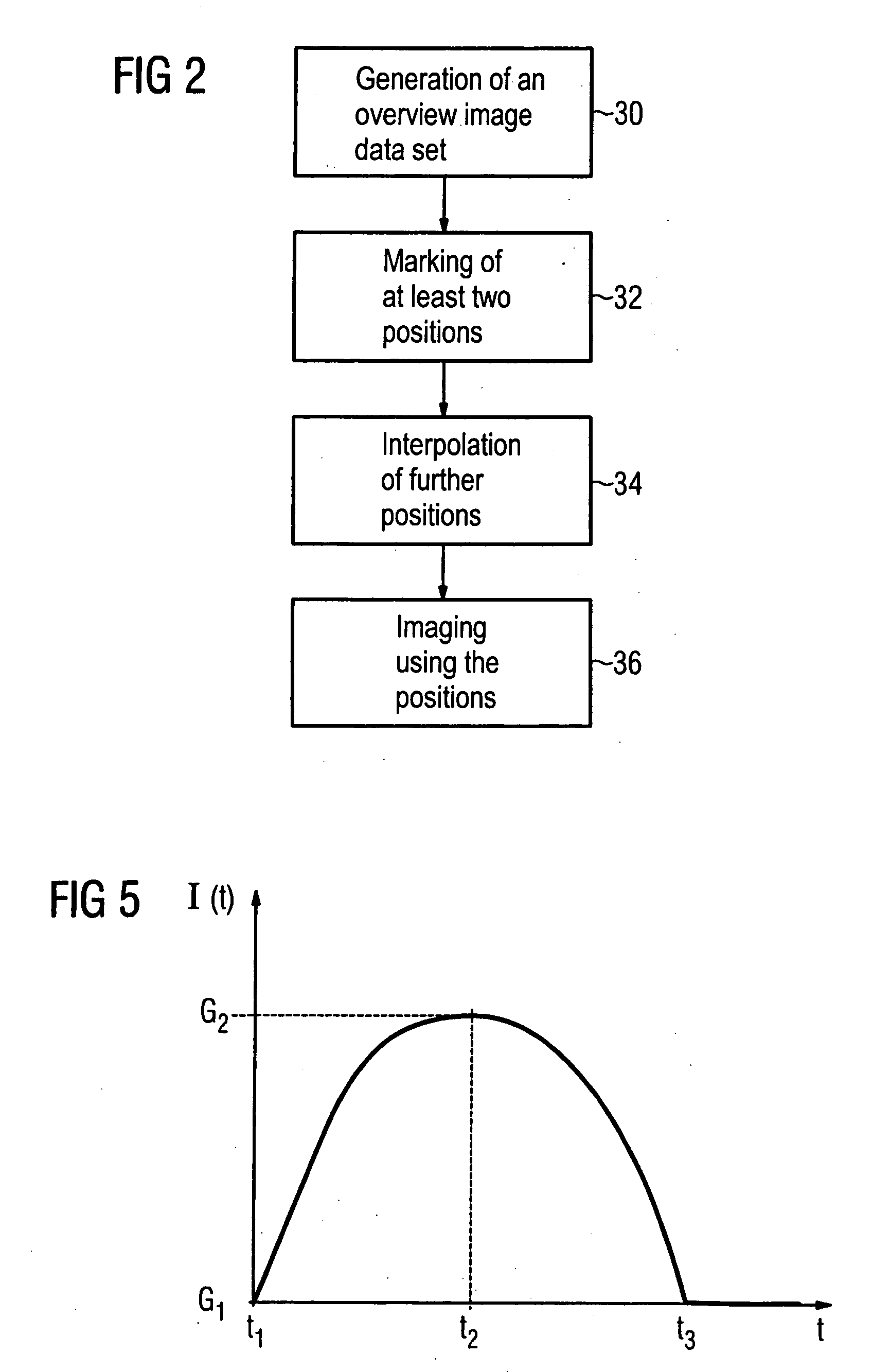Method for imaging of a periodically-moving subject region of a subject
a subject and subject technology, applied in the field of subject imaging, can solve the problems of limited use of navigator techniques, limited spatial resolution, and limited real-time method, and achieve the effect of simple administration, robust manner, and fast and accurate results
- Summary
- Abstract
- Description
- Claims
- Application Information
AI Technical Summary
Benefits of technology
Problems solved by technology
Method used
Image
Examples
Embodiment Construction
[0019]FIG. 1 shows the design of a diagnostic magnetic resonance apparatus with which imaging of a moving subject region of a moving subject can be implemented. The magnetic resonance apparatus has a conventional design except its controller is designed for execution of an embodiment of the inventive method.
[0020] Since the basic design of a diagnostic magnetic resonance apparatus as well known, here only the basic functional components are mentioned in brief summary. The magnetic resonance apparatus comprises a superconducting magnet 2 that generates a constant and homogeneous magnetic field in an imaging region 4 in its cylindrical inner chamber. A radio-frequency antenna unit 6 for excitation and reception of magnetic resonance signals is located in the cylindrical inner chamber. The radio-frequency antenna unit 6 is connected with a radio-frequency transmission and reception unit 8. A gradient coil unit 10 for spatially coding the magnetic resonance signals with temporally- and...
PUM
 Login to View More
Login to View More Abstract
Description
Claims
Application Information
 Login to View More
Login to View More - R&D
- Intellectual Property
- Life Sciences
- Materials
- Tech Scout
- Unparalleled Data Quality
- Higher Quality Content
- 60% Fewer Hallucinations
Browse by: Latest US Patents, China's latest patents, Technical Efficacy Thesaurus, Application Domain, Technology Topic, Popular Technical Reports.
© 2025 PatSnap. All rights reserved.Legal|Privacy policy|Modern Slavery Act Transparency Statement|Sitemap|About US| Contact US: help@patsnap.com



